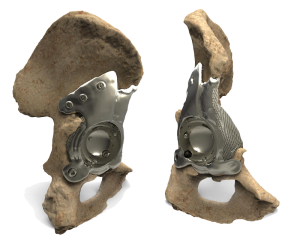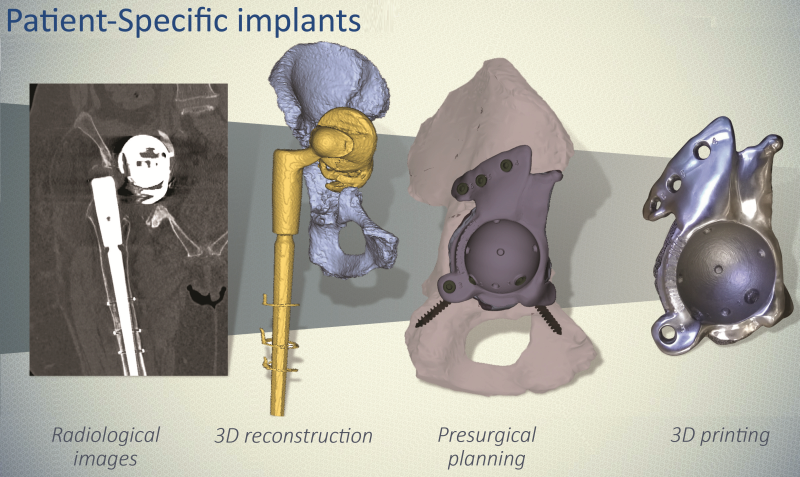
Young people who do not have inherent pathologies, clinically differ by the size of their bones and certain geometric variations. However, there is a wide range of clinical cases of people who suffer from acquired disorders of the musculoskeletal apparatus. The more severe the disorder is, the larger its diversity. Therefore, the more serious the condition of the patient, the more s/he needs a more complex patient-specific implant: joint, spinal, facial, cranial or osteosynthesis implant.
Even though surgeons attempt to recreate the human anatomy and functionality from what they have, what is distributed by standard implant manufacturer, the clinical condition treatment results using standard and patient-specific implants are completely different. Patient-specific implants are irreplaceable when a part of a bone needs to be removed due to oncological cases, when performing revision joint replacement surgeries, in cases of complex traumas and severe, acquired or congenital defects of the skeleton. Since current orthopaedic, neurosurgical and maxillofacial surgeries are becoming more and more complex, the need for patient-specific implants that would suit a particular patient’s clinical case is growing.
Patient-specific implants have become more accessible with the emergence of additive metal manufacturing technology (3D printing). The first 3D-printed medical grade titanium hip joint endoprosthesis described in the literature was implanted in 2006 in Australia. In the Baltic States, the first patient-specific hip implant was manufactured in 2015 in our company.
The patient-specific implant production method – 3D metal printing – as such gives implants added value because it almost has no limitations in the realisation of one-piece most complex constructions and enables to form trabecular metal surfaces that ensure better secondary fixation of the implant. All other advantages of patient-specific implants compared to standard implants arise from the design and the construction of an individual implant and the level of product personalisation.






